“ReactJS is an incredibly helpful library for developers across the World Wide Web (WWW) development community. From its beginnings at Facebook to now extreme popularity, demand for skills with this library only continues to grow.”
ReactJS is undoubtedly one of the most popular, widely used, and influential JavaScript libraries in the web development industry. While working as a software engineer for Facebook Advertising, Jordan Walke created the first rough draft of the library in 2010. Walke needed a way to make his own life easier, when developing for Facebook that allowed the updating of specific parts of a page without the need to refresh the entire thing, which led to the creation of the library.
Initially, Walke built a prototype called FaxJS, which he then integrated with XHP in 2011 to create what’s now known as ReactJS. At first, this new library was only used on Facebook by internal development teams. However, Facebook and Walke released it to the public in 2013 and made the library open-source, due to the sheer popularity of the library within just the company and the potential for it to benefit the wider website development community.
Thanks to its unique approach to assisting developers in the building of web applications, ReactJS gained immense popularity fairly quickly amongst the development community. The library uses declarative syntax, which allows ReactJS developers to describe what exactly they want the user interface (UI) to look like instead of how to get there. This method differs from more traditional JavaScript libraries, which use the imperative syntax (or direct commands, requests, invitations, warnings, and so on) and require developers to fully write out the steps needed to achieve their desired outcome.
Virtual DOM
ReactJS also uses a virtual DOM or JavaScript representation of the Document Object Model. This enables developers to update only the parts of the UI that they want to change instead of needing to update the entire page over and over again. This makes ReactJS faster and more efficient for handling dynamic and complex user interfaces.
Related: Angular vs React: Which Framework is Better?
React Native
In 2015, Facebook went on to release React Native as well. React Native is a framework that utilizes ReactJS for building mobile applications for both iOS and Android systems. This framework uses the same syntax as ReactJS as well, which makes it easier for developers to use their existing web dev skills to go on to build mobile applications. Thanks to the popularity of ReactJS, React Native went on to gain immense popularity and is now a top library choice for developers all around the world.
Redux
One of the biggest selling features of ReactJS is its large and super active community of developers who help contribute to the library online while also creating third-party tools and plugins for everyone’s use. One of the most popular of these tools is a predictable state container for JavaScript applications called Redux. Redux gives developers a way to manage the state of their applications and allows them to make changes to that state in a more predictable and consistent way than others.
Hooks
ReactJS developers introduced Hooks in 2019 as a new way to write logic that’s not only reusable but also shareable across components. Hooks provide devs with an easier way to reuse code while also making it easier to build and maintain complex applications.
Fiber architecture
Although its initial release was over 10 years ago, ReactJS continues to evolve and improve over the years. One of the most notable changes was in 2017 with the introduction of Fiber architecture. The Fiber architecture was essentially a complete rewrite of the core algorithm of ReactJS designed to help improve performance and enable new features. It also provided an even more efficient way to handle UI updates, thus making ReactJS even more efficient and faster than its previous state.
Tools and Library
ReactJS continues to grow more accessible to a wider audience over the years with continual new tool releases and library updates. The Create React App tool, for example, enables developers to create a ReactJS project with only a few simple commands. This makes the library much easier for beginners to get started.
ReactJS and Web Development
ReactJS made a significant impact on the web development industry with its initial release and continues to do so as its online community, and developers continually create new ways to make development easier and more efficient. Many developers all over the world consider it one of the most influential and effective libraries available to this day. Its ability to handle complex and dynamic user interfaces with ease and with absolutely no cost for use makes it a tool that web developers continue to use project after project. The demand for developers with ReactJS skills only continues to grow as well.
The History of ReactJS (Infographic)

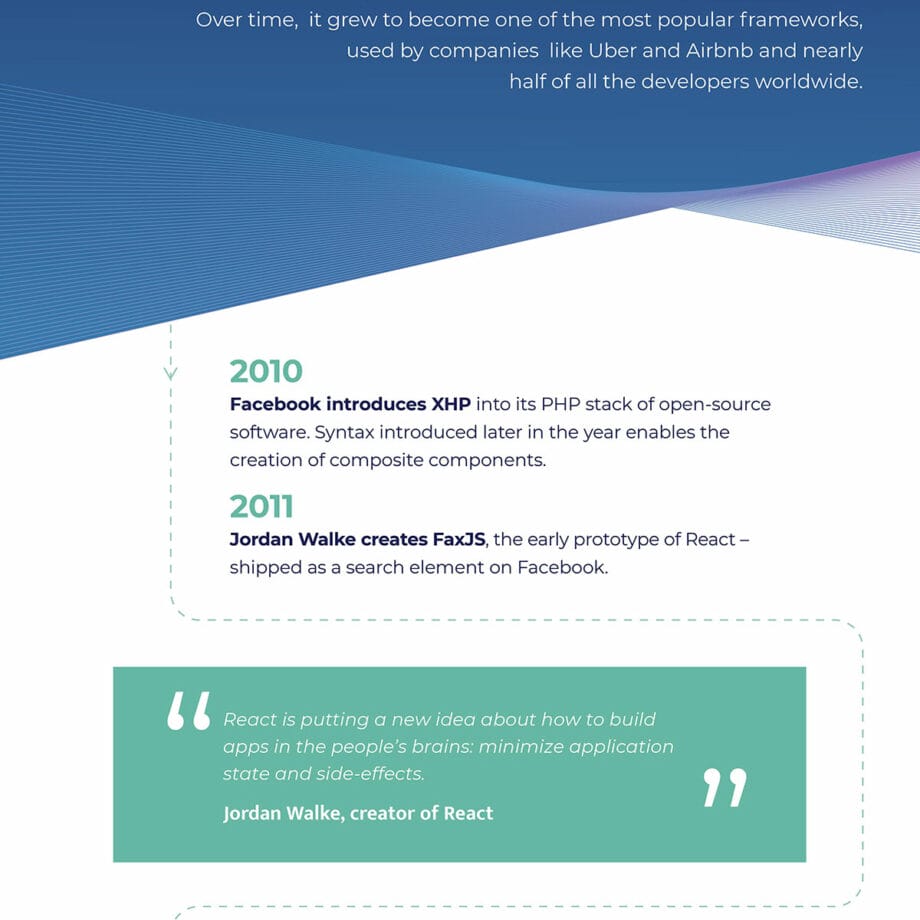
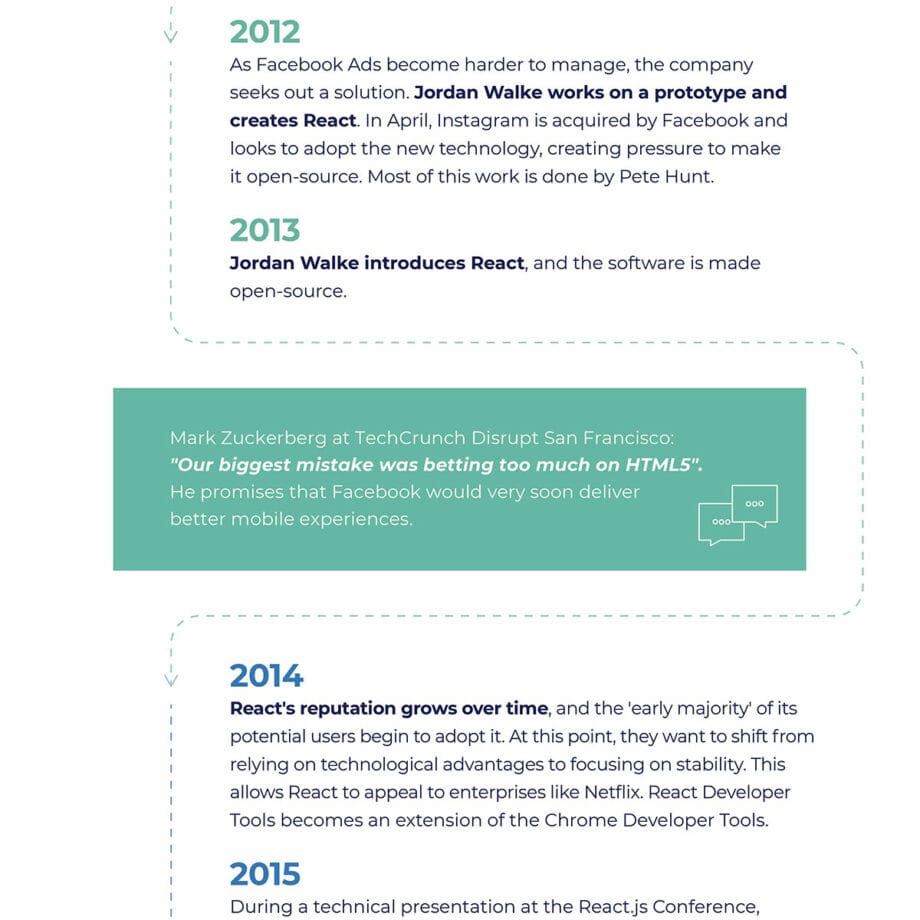

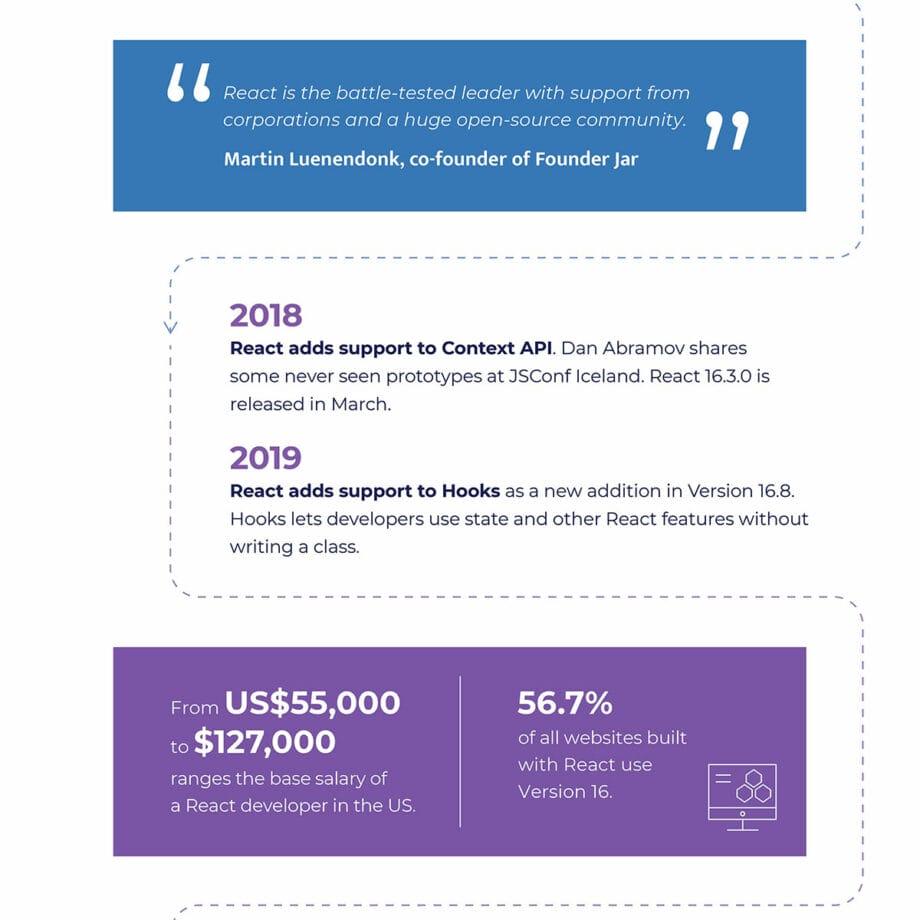
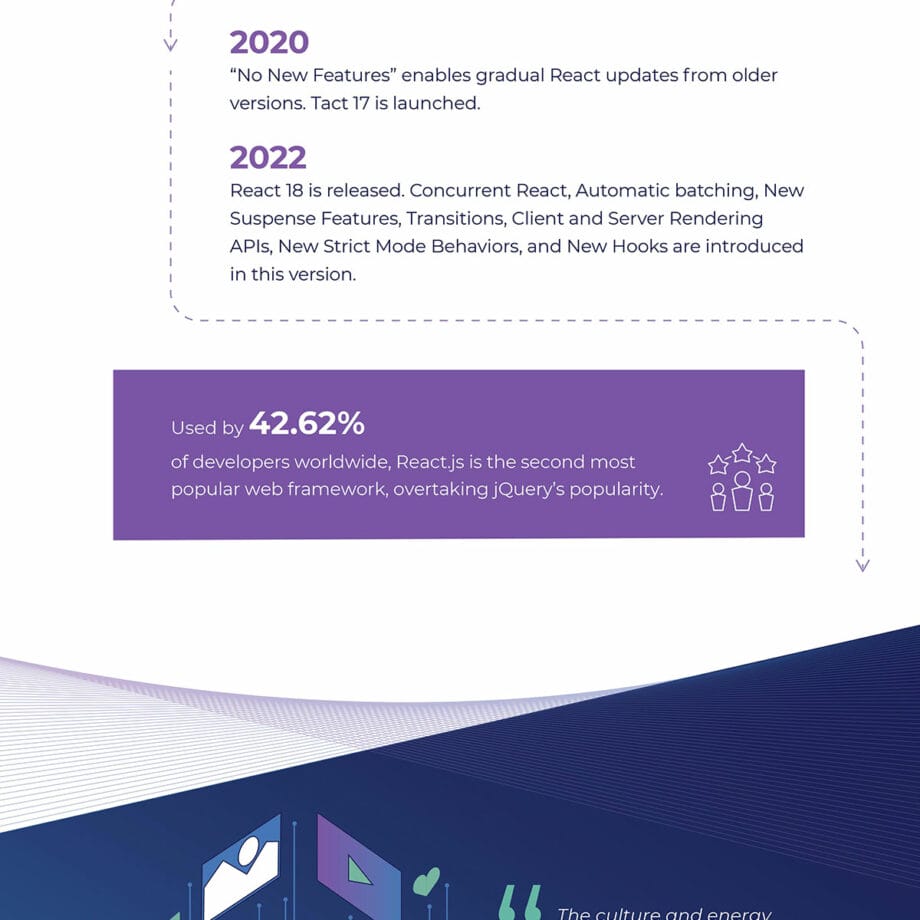

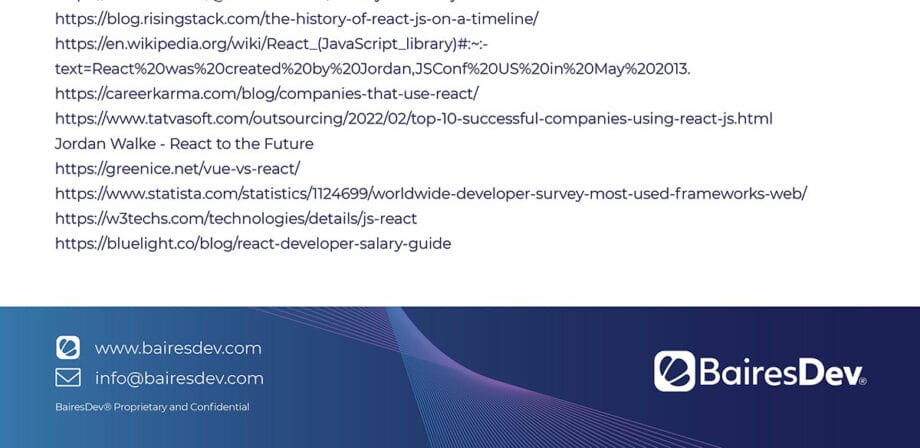
See also: 5 Benefits of Choosing React Native for Your Next Project.
Author: Chris Taylor
This infographic is submitted by Chris Taylor and originally published on the BairesDev website. Chris is a Business Development Manager at BairesDev, in charge of improving and growing relationships with customers, suppliers, and other partners. His knack for strategic planning makes him a great team leader with valuable reach across all areas of the business. Chris combines his experience in sales, business, and technology to write intriguing articles for BairesDev’s blog and other reputable media outlets. He has nearly 20 years of experience in the IT industry working in various capacities. You can follow him on LinkedIn.





